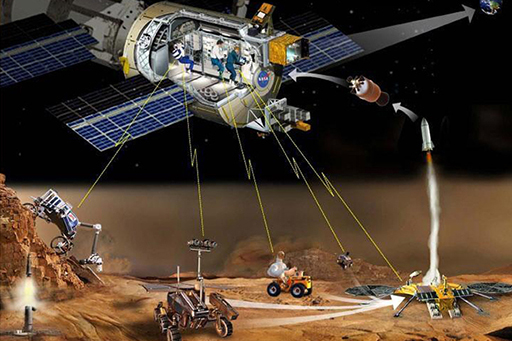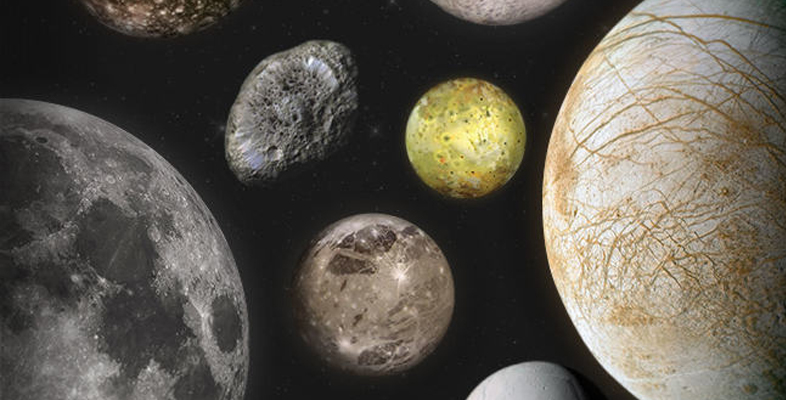1 Flights of the imagination
Many questions remain about the moons in the Solar System. Is there life on Europa? Is there a saltwater ocean below the surface of Ganymede? Can we build a base on the Moon? And what will the answers to these questions mean to us?

Now you get to apply what you’ve learned so far about moons to questions concerning the future of space science and exploration. You consider the potential for building bases on the Moon and for landing on other moons. And you ask how the answers to our questions will forever change the way we see moons in the Solar System.
Where do you think we should explore next?
After a fifty year break, NASA is set to return humans to the Moon with its Artemis program. The uncrewed Artemis 1 made a successful trip to the Moon and back 16 Nov–11 Dec 2022 (spending 6 days in a distant retrograde orbit about the Moon), and the crewed (4 person) Artemis 2 is due in 2025 or 2026. This will not land, but the plan is for the next mission Artemis 3, to land two of its crew in the south polar region. Follow the links below to learn more, and keep up to date with Artemis.
Space agencies from five nations have made successful uncrewed lunar landings: NASA (USA), the Soviet Union, China, India (August 2023) and Japan (January 2024). The latter two were short lived.
See also:
- NASA’s main Artemis page [Tip: hold Ctrl and click a link to open it in a new tab. (Hide tip)] The front page seems not to be updated very often, but if you follow links you can get more recent information, including pictures of the successful Artemis 1 splashdown after return to Earth.
- Wikipedia Artemis 1 page Possibly easier to find more information here than at the NASA page. Includes links to Artemis 2 and Artemis 3.
- SLIM: the Japanese Moon lander The Japan Aerospace Exploration Agency (JAXA) website for its ‘Smart Lander for investigating Moon’ (SLIM), which landed 19 January 2024 but whose solar panels failed to supply it with power.
- India’s Chandrayaan 3 and its Vikram lander ISRO webpage with various links.
